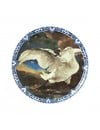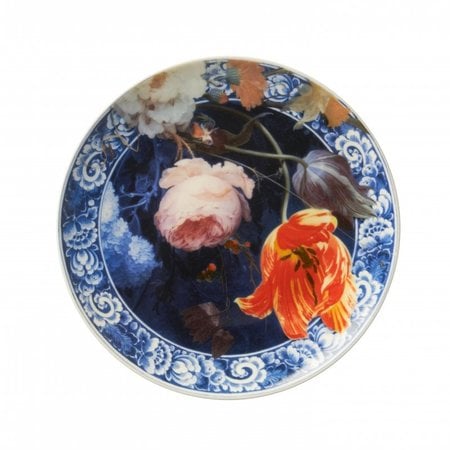Large plate with the endangered swan Rijksmuseum
- Product description
- Reviews
The endangered swan, too The endangered swan; later conceived as an allegory of Johan de Witt, is a painting by the painter Jan Asselijn (circa 1610 - 1652) from around 1650. It is part of the collection of the Rijksmuseum in Amsterdam.
The swan is depicted in life size, which gives it a more realistic appearance. The fighting position of the swan comes across as extra threatening, because the bird is painted from a low point of view, from the so-called frog's perspective. The swan is shown in shades of white, yellow, gray and also with blue. The bird is in the backlight. The left wing catches the sunlight with the top, enhancing the outlines of the chest and adding tension to the representation of the swan. Asselijn was a master of material expression. For example, the sunlight shines through the wafer-thin edges of the down feathers. The sky consists of two shades of blue, a grayer one at the top and a clearer one below. It is suspected that he used the pigments respectively narrow and ultramarine. The swan has just pooped, either as a deterrent or out of fear. At the top of the faeces subtle reddish-brown hues can be seen, which shows that Asselijn has studied the swan droppings well. Italian influences from the time he stayed in Italy are visible in the golden straws of the swan's nest, with which he reflected the sunshine.









